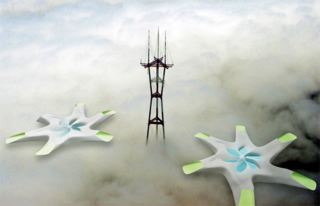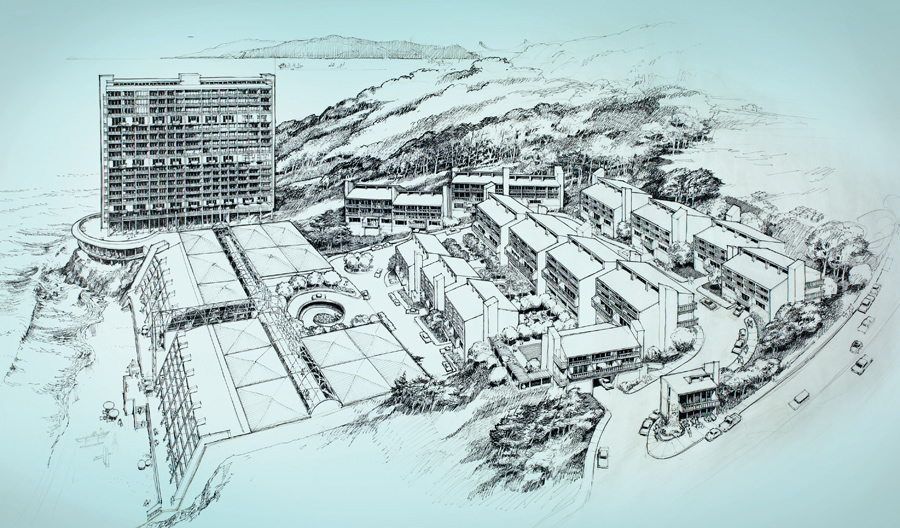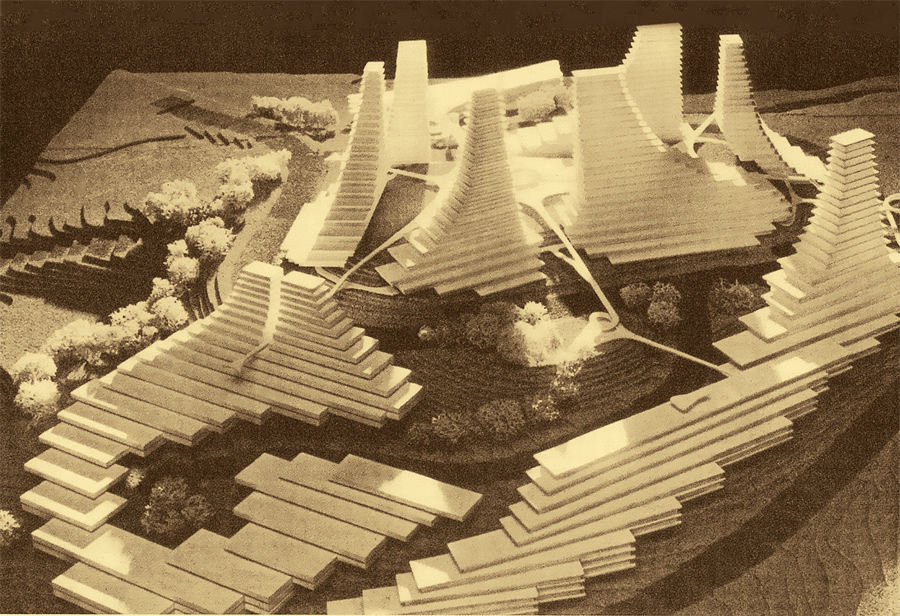Bay Area Reimagined
 |
What if high-rise hotels and shopping centers filled Alcatraz Island and San Francisco's Lands End, diamond-like towers topped the City's Diamond Heights, and you could soar on a roller coaster atop the spans of the Golden Gate Bridge?
We'd be living in an alternate universe.
The optimism that seized hold of designers right after World War II, the attitude that anything could be accomplished, gave their designs zest—and, at times, a degree of over-exuberance.
And remember, too, this was before environmental laws and historic preservationists made such things as, well, paving over the ruins of Adolph Sutro's 19th century Baths an extremely tricky proposition.
So sit back and enjoy the Bay Area that might have been—and might still be. Here is a handful of amazing modern designs that, if they had been built as planned, would have put a new face on what we call home today.
 |
1. Out of the Cliff House ruins
Picture San Francisco's Sutro Baths today, the ruins of the saltwater swimming pools, ghostly in the fog, beneath the touristy Cliff House restaurant.
Then imagine the spot, pictured here, as seen in the mid-1960s by architects Wurster, Bernardi and Emmons. Instead of ruined baths, you see a glass dome over a shopping area, a motel stepping down the cliffs toward the Pacific Ocean, high-rise apartments, and an oceanside promenade.
In some iterations of the plan, which the firm developed from 1964 to 1966, Point Lobos, just north of the baths, is occupied by a Frank Lloyd Wright-styled motel, long and low.
Today the area is part of the Golden Gate National Recreation Area. To enjoy one of Wurster, Bernardi and Emmons' tourist designs from the same era, check out Ghirardelli Square, just a few miles across town.
 |
2. Diamond Heights' crystal towers
Like crystals, they appear to be growing from atop San Francisco's Red Rock Hill, rising towards the sky in a fashion both orderly yet exuberant.
"This bold creative grouping of high-rise structures about the large hilltop piazza creates a beautiful landmark, giving new identity to the physical form of San Francisco," the judges wrote in 1961 of Jan Lubicz-Nycz's proposal for Red Rock Hill, part of the Diamond Heights redevelopment, which would eventually include nearly 100 Eichler-built homes.
They ranked the plan among the top four of 90 submitted in an international competition.
Lubicz-Nycz was a Polish émigré who did the design in partnership with several other architects, including Mario Ciampi.
The judges—who seem to have favored Lubicz-Nycz's plan over the other three—said it "can be a fully economical and practical solution. It should challenge the imagination of a forward-looking developer."
None such stepped forward. The area today is occupied by low-rise dwellings.




